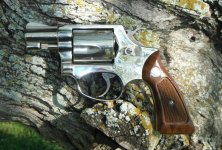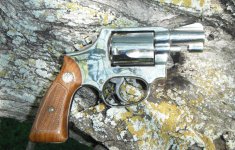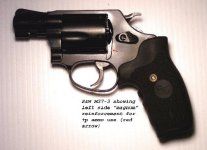Went to the lgs on Fri. to see if they had a 12 ga.coach gun with outside hammers.I went to the end of the counter were they keep the shotguns and asked one of the guys if they had one.He said not at the moment but he'll let me know when they get one. I happened to look down as the used handguns are kept there also and saw something shining on the lower shelf,and there it was! Model 37 no dash nicklel plated snubbie.It went right into the OWB I was wearing. Snubbie number 6! lol Now I need to find some blued ones.
And the search go's on.
And the search go's on.



